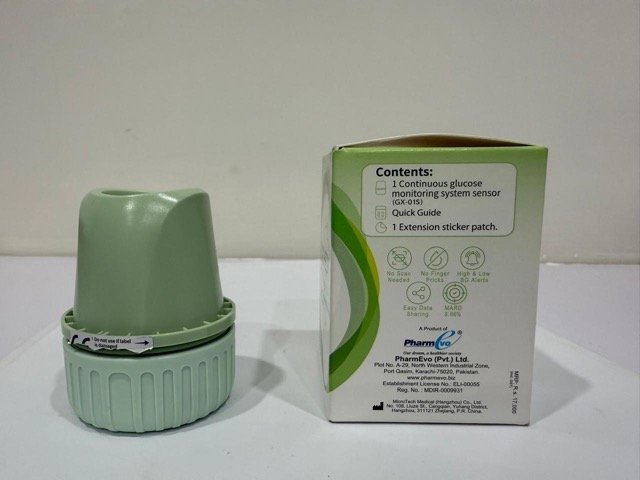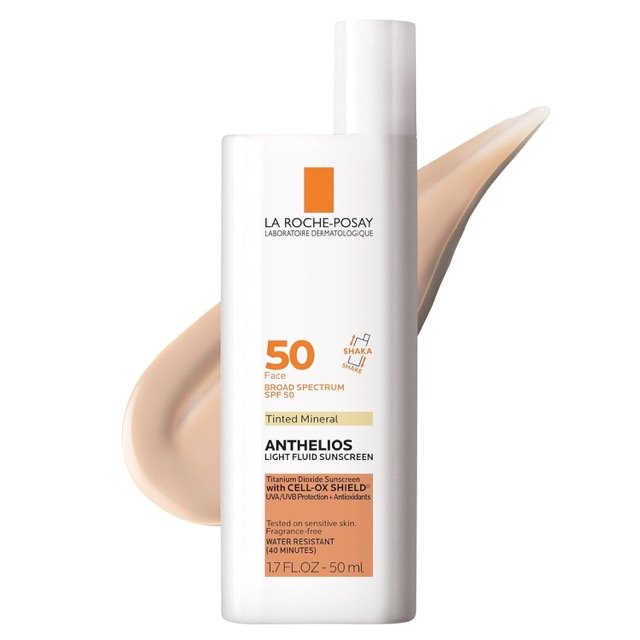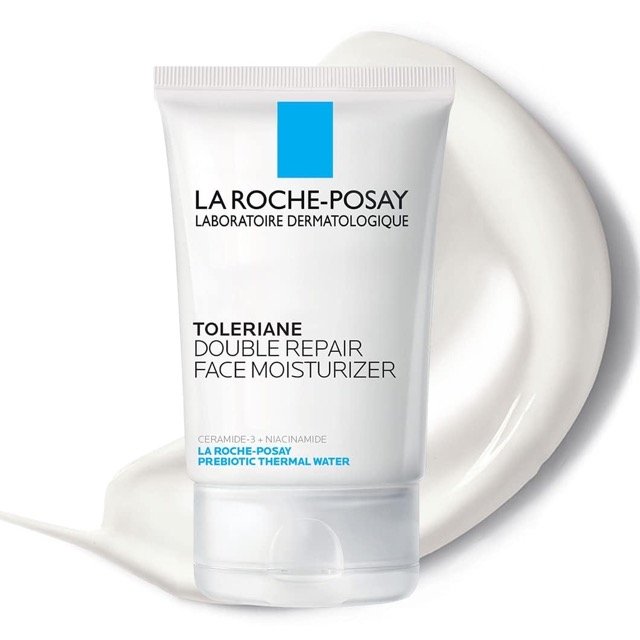Tri-Luma is a combination of three ingredients - Fluocinolone, Hydroquinone, and Tretinoin. It is used in the treatment of moderate to severe melasma.
Tri-Luma (Fluocinolone, Hydroquinone, and Tretinoin) Uses:
-
Melasma:
- It is used for the short-term treatment of moderate to severe melasma of the face
Tri-Luma (Fluocinolone, Hydroquinone, and Tretinoin) Dose in Adults
Tri-Luma (Fluocinolone, Hydroquinone, and Tretinoin) Dose in the treatment of Melasma:
- Once daily, until the disease is under control, apply a thin layer of the topical cream to the affected regions.
- Treatment must not be prolonged beyond eight weeks.
Tri-Luma Dose use in Children:
Not indicated.
Pregnancy Risk Factor C
- Tri-Luma was not studied in pregnant women.
- Topical retinoin can be quickly metabolized by the skin and is low-risk for teratogenicity.
- Avoid topical tretinoin during pregnancy, especially in the first trimester.
- You can use topical corticosteroids during pregnancy. It is best to avoid higher doses or prolonged treatment as this can cause intrauterine growth retardation.
- Do not delay treatment until delivery
Use during breastfeeding:
- Avoid contact between nursing infants, cream, and other people.
Tri-Luma Dose in Kidney Disease:
In the manufacturer's labeling, dosage adjustment has not been recommended in patients with kidney disease.
Tri-Luma Dose in Liver disease:
In the manufacturer's labeling, an adjustment in the dose has not been recommended.
Common Side Effects of Tri-Luma (Fluocinolone, Hydroquinone, and Tretinoin):
-
Dermatologic:
- Erythema
- Desquamation
- Burning Sensation Of Skin
- Xeroderma
- Pruritus
Less Common Side Effects Of Tri-Luma (Fluocinolone, Hydroquinone, and Tretinoin):
-
Central Nervous System:
- Paresthesia
- Hyperesthesia
-
Dermatologic:
- Acne Vulgaris
- Telangiectasia
- Dyschromia
- Skin Irritation
- Acne Rosacea
- Papule
- Skin Rash
- Skin Vesicle
-
Gastrointestinal:
- Xerostomia
Contraindications to Tri-Luma (Fluocinolone, Hydroquinone, and Tretinoin):
Allergy to hydroquinone, fluocinolone, tretinoin or any other component of the formulation
Warnings and precautions
-
Suppression of the adrenals:
- Topical steroid use over a long period of time may inhibit the adrenal glands.
- Topical steroid use, particularly in young children and individuals receiving large doses of topical corticosteroids for an extended period of time, can result in HPA (hypothalamic-pituitary-adrenal) axis suppression.
-
Dermatitis:
- Contact dermatitis and cutaneous allergy to individual drugs can occur.
- In the event of an allergic reaction, the patient should seek medical attention.
-
Exogenous ochronosis:
- Exogenous ochronosis may cause blu-black skin darkening due to hydroquinone.
- In such cases, treatment must be stopped.
-
Kaposi's Sarcoma:
- Kaposi Sarcoma can be caused by prolonged topical corticosteroid use. Treatment discontinuation may be necessary.
-
Systemic effects
- After prolonged topical corticosteroids use, systemic absorption can occur.
- Glucosuria and hyperglycemia are two clinical indications of Cushing's syndrome that you might experience.
- Cushing's syndrome can be caused by occlusive dressings. The drug is applied to denuded skin, or an area larger than the body for a longer time.
Fluocinolone, hydroquinone, and tretinoin: Drug Interaction
|
Risk Factor C (Monitor therapy) |
|
|
Aminolevulinic Acid (Topical) |
Aminolevulinic Acid's photosensitizing impact may be enhanced by photosensitizing agents (Topical). |
|
Corticorelin |
The therapeutic benefit of corticorelin may be reduced by corticosteroids. In particular, recent or ongoing corticosteroid medication may reduce the plasma ACTH response to corticorelin. |
|
Deferasirox |
Corticosteroids may intensify Deferasirox's negative/toxic effects. Particularly, there may be a higher risk of GI bleeding or ulcers. |
|
Porfimer |
The photosensitizing effect of Porfimer may be strengthened by photosensitizing agents. |
|
Ritodrine |
Corticosteroids may intensify Ritodrine's harmful or hazardous effects. |
|
Verteporfin |
Verteporfin's photosensitizing effect may be strengthened by photosensitizing agents. |
|
Risk Factor D (Consider therapy modification) |
|
|
Hyaluronidase |
The therapeutic benefit of hyaluronidase may be reduced by corticosteroids. Treatment: Standard doses of hyaluronidase may not produce the desired clinical response in patients using corticosteroids (especially at higher doses). Hyaluronidase may be needed at higher doses. |
|
Risk Factor X (Avoid combination) |
|
|
Aldesleukin |
Corticosteroids may diminish the antineoplastic effect of Aldesleukin. |
|
Aminolevulinic Acid (Systemic) |
Aminolevulinic Acid's photosensitizing impact may be enhanced by photosensitizing agents (Systemic). |
|
Multivitamins/Fluoride (with ADE) |
May intensify the negative or harmful effects of derivatives of retinoic acid. |
|
Multivitamins/Minerals (with ADEK, Folate, Iron) |
May intensify the negative or harmful effects of derivatives of retinoic acid. |
|
Multivitamins/Minerals (with AE, No Iron) |
May intensify the negative or harmful effects of derivatives of retinoic acid. |
Monitoring parameters:
Monitor for the postural hypotension and other features of HPA (hypothalamic-pituitary axis) suppression.
How to administer Tri-Luma (Fluocinolone, Hydroquinone, and Tretinoin)?
- It is available for external use only.
- Oral, mucosal, intravaginal, or administration into the eyes should be avoided.
- It should be applied at least half an hour prior to bedtime.
- Before applying the cream, the face should be washed with a cleanser, rinsed, and pat-dried.
- A thin layer should be applied over the lesion.
- The cream should be rubbed lightly and uniformly.
- Sun exposure and occlusive dressings should be avoided over the skin.
- During the daytime, a sunscreen with a minimum protection power of SPF-30 should be used along with protective clothing.
- Cosmetics and moisturizers may be used during the daytime.
Mechanism of action of Tri-Luma (Fluocinolone, Hydroquinone, and Tretinoin):
A topical corticosteroid with anti-inflammatory, antipruritic and vasoconstrictive effects is fluocinolone. It stops endogenous inflammatory chemical mediators such as prostaglandins, histamines, liposomal enzymes, and kinins from being produced, secreted, and active. By producing lipocortins, phospholipase inhibitory proteins, and successive inhibition of arachidonic acid release, it stops the production of these mediators. A glucocorticoid of low to moderate potency is fluocinolone (potency depends on the dose).
Hydroquinone interferes with melanin production via the tyrosine tyrosinase pathway, reducing hyperpigmentation.
TretinoinTopically, it is a vitamin A derivative which modifies epithelial differentiation and growth. The follicular epithelial cells of acne patients have less cohesion, which can inhibit the production of micro-comedones. Tretinoin also promotes the mitotic process, accelerates the turnover of follicular epithelial cells, and causes comedones to extrude.
Absorption is minimal
Metabolism:
- The small amount that is absorbed is metabolized in the liver.
Excretion:
- Urine and feces
International Brands of Fluocinolone, Hydroquinone, and Tretinoin:
- Tri-Luma
- Amela
- Hydrotrelon
- Lasmacure
- Lumiquin
- Melanofree
- Melasin
- Quintri
- Refaquin
- Spotclear
- Tri-Luma
- Triluma
- Trimela
- Trimelasin
- Trimina
Fluocinolone, Hydroquinone, and Tretinoin Brand Names in Pakistan:
Fluocinolone Acetonide, Hydroquinone, and Tretinoin Cream 0.01 g |
|
| Hyderquin Plus | Atco Laboratories Limited |
Fluocinolone Acetonide, Hydroquinone, and Tretinoin Cream 0.01 % w/w |
|
| Acnytret Plus | Amarant Pharmaceuticals (Pvt) |
| Flutrinon | Warafana Pharmaceuticals |
| Flytro | Tabros Pharma |
| Neoblance | Neophar Health-Care |
| Novaderm | Dermagen Pharma Pakistan (Pvt) Limited |
| Retrieve | Mass Pharma (Private) Limited |
| Trihycolon | Rogen Pharmaceuticals |
| Trimelasin | Valor Pharmaceuticals |







